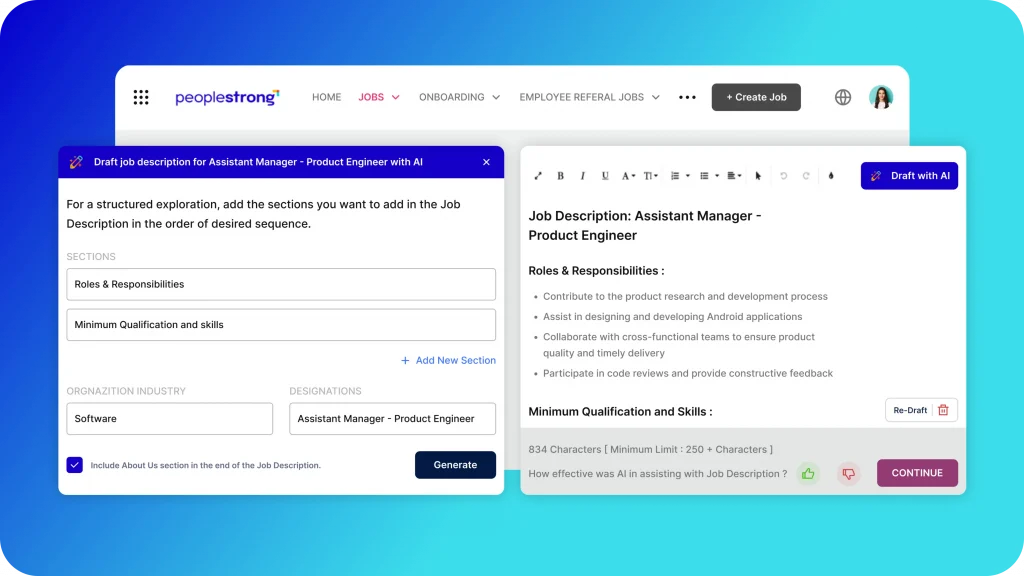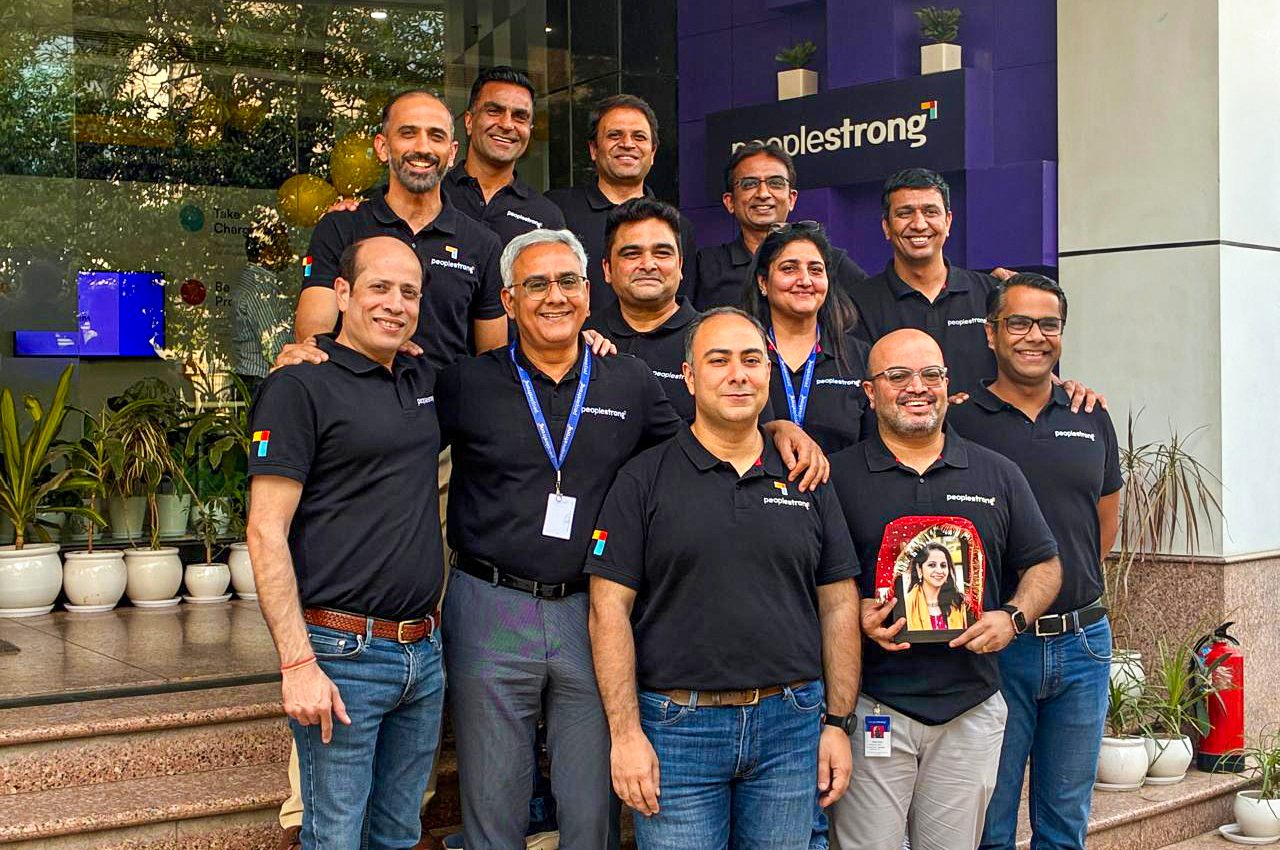As a decision-maker, you wield a strategic advantage with an efficient recruitment process. Especially now, as companies worldwide face the Global Talent Shortage.
The ManpowerGroup report shows that 69% of global employers struggle to fill positions—the toughest scenario in over a decade. Moreover, the IBM Smarter Workforce Institute’s study says that satisfying candidates’ recruitment experiences makes them 38% more likely to accept a job offer.
In addition to this, challenges such as aligning candidate skills with organizational needs, ensuring diversity and inclusion in the hiring process, and mitigating the high costs associated with employee turnover further complicate recruitment efforts.
This blog provides a step-by-step guide on how to improve the recruitment process, ensuring you attract, engage, and keep the top talent vital to your success.
Common Challenges in the Recruitment Process
It’s crucial to understand the challenges you’ll face in refining your recruitment process. Here’s a breakdown of common issues and how they impact your ability to secure top talent:
- Sourcing Quality Candidates: Finding individuals with the right skill set and a good cultural fit is complex. This challenge is magnified by the vast pool of applicants and the nuanced nature of evaluating cultural fit. You’ll need more targeted efforts and strategies beyond traditional recruitment methods.
- Managing Large Volumes of Applications: With the advent of digital job postings, companies are loaded with applications. This makes it a daunting task to sift through and identify potential candidates efficiently.
- Ensuring Diversity: Achieving a diverse workforce requires conscious effort and strategies to reach underrepresented groups. HR teams are tasked with overcoming unconscious biases that may exist in the recruitment process.
- Efficient Use of Recruitment Technologies: Companies often grapple with selecting the appropriate applicant tracking systems (ATS) and HR tech tools that seamlessly integrate with existing workflows. There are a lot of other factors to consider, like cost, scalability, need for specific features, customization, etc. Additionally, ensuring data privacy and compliance with regulations when handling candidate information poses significant hurdles.
- Adapting to Remote Hiring and Onboarding: The shift towards remote work requires you to rethink and adapt your recruitment and onboarding strategies to remain effective in a virtual setting.
Consequences of an Inefficient Recruitment Process
An inefficient recruitment process doesn’t just cause operational issues; it strikes at the foundation of your organization, leading to the following issues:
- High Turnover Rates: When your recruitment strategy fails to align with job roles, it results in poor job fit, disengagement among employees, and skyrocketing turnover rates. This not only disrupts operations but also incurs significant costs.
- Increased Hiring Costs: A sluggish recruitment process prolongs the time-to-hire and boosts the cost-per-hire, draining your organization’s resources.
- Negative Impacts on the Employer Brand: A complex or unclear recruitment process can spoil your organization’s image among potential candidates, repelling top talent and harming your overall employer brand.
How to Improve Your Recruitment Process: An 8-Step Guide
To dramatically boost the efficiency and effectiveness of your hiring cycle, follow this 8-step guide on refining your recruitment process. This course empowers you, the decision-maker, with actionable strategies:
1. Map the Existing Recruitment Workflow And Find Bottlenecks
Overcome hiring delays caused by extended decision-making, inefficient screening, lengthy background checks, and complex approval processes by streamlining your recruitment workflow. Here’s your action plan:
- Document the Entire Recruitment Process: Start by mapping out every step, from job posting to onboarding, to identify where delays typically occur. Here’s a comprehensive step-by-step framework explaining the entire recruitment process.

- Solicit Feedback from Stakeholders: Engage HR professionals, hiring managers, and both successful and unsuccessful candidates to gather insights on the recruitment experience.
- Benchmark Against Industry Standards: Compare your processes with best practices in the field to spot inefficiencies or areas ripe for improvement.
2. Aim for Crisp, Concise, and Clear Job Descriptions/Postings
Your recruitment process starts with how effectively you communicate available roles. Job descriptions and postings are your first interaction with potential candidates, making their clarity, brevity, and inclusivity critical.
- Use straightforward, accessible language that communicates what the job entails.
- Avoid industry jargon that might confuse or alienate potential applicants.
- Use language that invites applicants from diverse backgrounds, promoting a culture of diversity.
- Be mindful to avoid language that might unintentionally favor certain groups over others.
- Besides listing duties and requirements, showcase what makes your organization an exceptional place to work.
You can also incorporate Generative AI (GenAI) to craft engaging JDs with job-specific insights in minutes. PeopleStrong’s GenAI solution can understand the nuances of the position, required skills, and hiring level. It ensures your job descriptions are not only crafted for optimal clarity and inclusivity but also attract three times more applicants.

Explore how GenAI can transform your recruitment strategy. Start with an interactive demo today.
3. Leverage Technology to Streamline Your Hiring
An application tracking system can help efficiently organize applications and slash your manual workload. You also need to expand your sourcing strategies through omnichannel sourcing. Tap into an array of digital platforms, social media, and professional networks to cast a wider net for potential candidates.
Furthermore, nowadays, many AI-powered tools are available to match candidates’ skills and experiences with job requirements.
PeopleStrong’s advanced HR Tech 4.0 platform takes recruitment technology to the next level. Our AI-powered recruitment platform is designed to simplify and enhance every aspect of hiring, from recruitment to onboarding and beyond.
You can benefit from a streamlined application process, smarter candidate matching, and efficient management of the entire recruitment lifecycle. Empower your team to hire faster and smarter with PeopleStrong’s AI-powered recruitment platform, ensuring you attract and retain top talent effortlessly.
4. Build Proactive Talent Pipelines
Craft a dynamic talent pipeline to shape your future workforce. Start by sparking connections at networking events, social media, and professional forums, engaging potential candidates long before you need to fill a position.
Boost your recruitment strategy by empowering your employees to refer top talent. This direct approach benefits from your employees’ networks to discover talent that not only matches the required skill set but also fits seamlessly into your company culture.
Offer enticing incentives for referrals that bring in individuals who not only have the skills but also resonate with your company’s culture.
Adopt talent acquisition platforms to effortlessly gather a pool of qualified candidates, ensuring you’re ready to hit the ground running the moment a new role opens.
5. Implement a Focused and Narrowed-down Screening and Selection Process
Narrow down your screening criteria to focus on essential qualifications and experiences, making the process more efficient and targeted. This can be done through:
- Digital Assessments: Use tools for realistic job previews and practical skill evaluations, matching candidates accurately to job requirements.
- Panel Interviews: Engage multiple team members through video conferencing to enrich candidate evaluation and provide team dynamic insights.
- Matching Skills: Prioritize the alignment of candidates’ skills with specific job needs to ensure a precise fit.
- Collaborative Hiring: Involve various team members in the hiring decision to gain diverse perspectives and enhance the selection process.
Suggested Read:
A Complete Guide to Recruitment Screening Process
6. Foster Inclusivity and Diversity
Crafting inclusive job descriptions is the first step toward building a diverse workforce. Taking these steps not only widens your talent pool but also reinforces your commitment to an equitable hiring process. Here’s how you can go about it:
- Write Inclusive Job Descriptions: Use language that encourages a broad range of candidates to apply and highlight your commitment to diversity and inclusion.
- Implement Blind Resume Screenings: Adopt blind screening practices to minimize unconscious bias in the initial candidate evaluation stages.
- Utilize Structured Interviews: Standardize interview questions and evaluation criteria to ensure all candidates are assessed fairly and consistently.
7. Leverage Employer Branding
Employer branding has become a pivotal aspect of attracting top talent. It helps you elevate your appeal to top talent by actively showcasing your workplace and culture.
You can offer virtual tours and produce videos that depict a day in the life of your current employees, allowing candidates to understand your work environment and culture without a physical visit. For instance, if your company specializes in technology, highlight your collaborative spaces and innovation labs with immersive virtual experiences.
You also need to focus on boosting your social media engagement by sharing employee testimonials and behind-the-scenes content. This proactive approach significantly boosts your appeal as an employer, drawing in high-quality candidates.
8. Enhance Remote Onboarding and Integration
With the rise of remote work, it’s critical to refine your onboarding practices for remote hires. Here’s how you can ensure a smooth transition:
- Develop a Comprehensive Onboarding Plan: Craft a schedule that covers virtual introductions, training sessions, and regular check-ins to make new hires feel included and prepared to start.
- Launch an Online Welcome Portal: Set up a digital space featuring video introductions from team members, key training modules, and resources essential for newcomers.
- Pair New Hires with Mentors: Connect each new employee with an experienced colleague who can offer guidance, address queries, and help them integrate into your company culture seamlessly.
Build Your Recruitment Process Improvement Plan With PeopleStrong
Continuously refining your recruitment process is essential to gaining a competitive edge. You need to adopt strategies that position you ahead in talent acquisition, and utilizing platforms like PeopleStrong can play a significant role in this endeavor.
PeopleStrong is a leading HR Technology and Solutions company that provides a comprehensive suite of services that empowers organizations to streamline their HR processes through smart technology. It helps you:
- Quickly find and track the right talent using AI and a network of over 3500 job boards.
- Develop tailored candidate pipelines with AI matching and skill recommendations for precise role filling.
- Streamline your process with automated tasks and integrated assessments for faster, more efficient hiring.
- Offer modern, intuitive recruitment experiences across devices with easy communication and scheduling features.
- Personalize your hiring process with 100+ integrations and insightful analytics for data-driven, scalable recruitment strategies.
As a vital partner for companies aiming to excel in the digital age, PeopleStrong makes it easier for you to manage and improve your hiring process, ensuring you attract and retain top talent efficiently. The question is, are you ready to hire smart? Get started today












